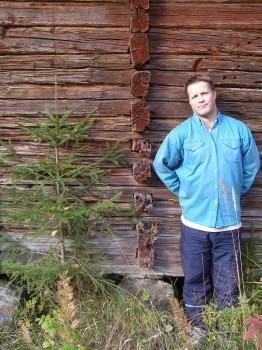Search results for "2011/04/matti-suurpaa-parnasso-1951–2011-parnasso-1951–2011"
Christmas best-sellers in Finnish fiction
13 January 2012 | In the news

Rosa Liksom. Photo: Pekka Mustonen
Most new Finnish books are printed and sold in the autumn, and sales pick up considerably in December. The number one on the December list link: in Finnish only) of best-selling fiction titles in Finland, compiled by the Finnish Booksellers’ Association, is the Finlandia Fiction Prize-winning novel Hytti nro 6 (‘Compartment number 6’, WSOY, 2011) by Rosa Liksom (this is her homepage, also in English).
The Finlandia winner was announced on 1 December, upon which the book shot – from nowhere – to the top of the list.
Laila Hirvisaari’s historical novel, Minä Katariina (‘I, Catherine’, Otava), climbed up from the third place to the second. Number three was a newcomer, a tragic love story entitled Kätilö (‘The midwife’, WSOY), by Katja Kettu, set in the last phase of the Finnish Continuation War (1941–1944).
Jari Tervo’s Layla (WSOY) was in fourth place, while November’s number one, Ilkka Remes’s thriller Teräsleijona (‘Steel lion’, WSOY), came fifth.
In November Tuomas Kyrö occupied both the fourth and the tenth place with his novels Kerjäläinen ja jänis (‘The beggar and the hare’, Siltala – a pastiche-style story inspired by Jäniksen vuosi / The Year of the Hare by Arto Paasilinna, 1975) and Mielensäpahoittaja (‘Taking offence’, WSOY, 2010). In December they were numbers six and seven, in reverse order.
Johanna Korhonen: Kymmenen polkua populismiin [Ten paths to populism]
3 October 2013 | Mini reviews, Reviews
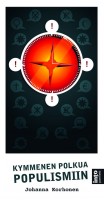 Kymmenen polkua populismiin. Kuinka vaikenevasta Suomesta tuli äänekkään populismin pelikenttä
Kymmenen polkua populismiin. Kuinka vaikenevasta Suomesta tuli äänekkään populismin pelikenttä
[Ten paths to populism. How silent Finland became a playing field for loud populism]
Helsinki: Into Kustannus Oy, 2013. 81p.
ISBN 951-952-264-257-8
€15, paperback
This pamphlet on the populist True Finns party was commissioned by the British think tank Counterpoint (PDF available in Finnish). In 2011, under the leadership of the rhetorically gifted Timo Soini, the True Finns became the largest opposition party in the Finnish parliament. In the background of this phenomenon the journalist Johanna Korhonen sees, among other things, the recession of the 1990s, the fear of economic insecurity, and the paucity of alternatives and debate that characterise politics in Finland. The left-leaning party favours simplifications and longs for national unity and security. It nevertheless includes an extremist nationalist minority whose agenda includes resistance to the European Union, cultural diversity, minority rights and foreign influences, and can even be racist. Korhonen focuses and simplifies in pamphleteering fashion, but argues patiently, basing her views on facts, and considers the beneficial effects the populist party has had on the national debate, offering her suggestions for a more humane politics.
Translated by Hildi Hawkins
Notes for an unwritten autobiography
15 September 2011 | Fiction, Prose
Extracts from the novel William N. Päiväkirja (‘William N. Diary’, Otava, 2011). Interview by Soila Lehtonen
Paris, 15 November 1897
Constance probably bought this notebook for housekeeping purposes, but forgot it when she left, so I shall take it for my use, and I am not going to tear a single page, because the paper is of good quality and the covers are made of calico. When I write in a small hand there is plenty of room for the text, and when I write in Swedish Constance will not understand, if she chances to see the notebook. She has promised to visit once or twice a week and continue to bring food and do the cleaning (we cleared up the differences of opinion that were related to her departure), even though she has now moved and married a retired officer, having been my housekeeper for nearly 30 years. The laundry she has delegated to Madame L., who lives in this house, although that lady is intolerably nosy and talkative, and she has six smutty children. I have decided to write my autobiography, so that posterity shall receive a full and proper impression of my work. (Let Prof. Schwendener from Berlin and Dr Louis Pasteur be content with minor roles!) I shall not begin until tomorrow, for today I intend to study the specimens of South American lichens Prof. D. has sent if there is enough daylight. More…
New from the archives
13 March 2015 | This 'n' that
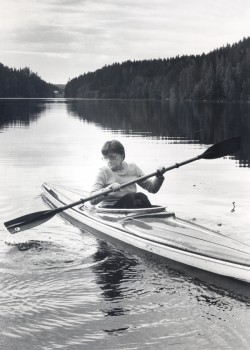
Eeva-Liisa Manner. Photo: Tammi.
Today we have a real treat – a selection of the sumptuously minimalist poetry of Eeva-Liisa Manner (1921–1995) by her near-contemporary, the British poet Herbert Lomas (1924–2011).
Born in Helsinki, Manner spent her youth in Viipuri, in what was then part of Finland; her life was, like Eeva Kilpi’s, marked by evacuation from her home and the subsequent loss of Karelia to the Soviet Union in the Second World War. Her breakthrough collection, Tämä matka (‘This journey’, 1956) marked a major arrival on the modernist poetry scene and her work has been widely translated. Always lyrically minimalist, Manner’s poetry sometimes seemed to approach the limits of language – silence:
The words come and go.
I need words less and less.
Tomorrow maybe
I’ll not need a single one,
she wrote in Niin vaihtuvat vuoden ajat (‘So change the seasons’), as early as 1964.
Lomas brought to the delicate, beautiful textures of Manner’s poetry with its themes of grief, suffering and loneliness a bluff Yorkshire, and entirely masculine, sensibility. For him, Manner had a ‘splendid sanity’ and sense of humour; hers was an oeuvre ‘that heals by listening and recovery’.
Manner’s work has more recently been translated by another English writer, Fleur Jeremiah, in a volume entitled Bright, dusky, bright (Waterloo Press, 2009). A sample of the approach taken by a woman of a different generation can be found here.
*
The digitisation of Books from Finland continues apace, with a total of 360 articles and book extracts made available online so far. Each week, we bring a newly digitised text to your attention.
Coolness and warmth
21 April 2011 | Reviews

Bo Carpelan. Photo: Irmeli Jung
The coolness on the mountain
streams of water, black forests
in the west a growing light
foreboding sleep
These lines are from Gramina, the twenty-second and last collection of verse by the Finland-Swedish poet Bo Carpelan, which appeared last summer.
The short poem captures much of what was typical of Carpelan’s poetic style: a visually sharp and objective image which juxtaposes the world we see with a sense of something different, undefined. Time the unstoppable, which changes everything, was his central theme, and it also figures here.
Carpelan (1926–2011) made his debut in 1946 and was hailed early on as a renewer of the modernist tradition that in Finland began in the early 20th century with Edith Södergran (1892–1923) and Elmer Diktonius (1896–1961). He combined the Finnish-Swedish heritage of reflective nature poetry with imagistic stimuli from Swedish- and English-language modernism. More…
Poetry written aloud
20 May 2011 | Reviews
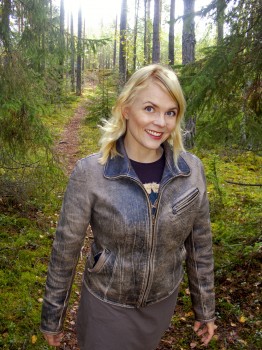
Heli Laaksonen. Photo: Otava/Irmeli Jung
In the 21st century, poetry written in various dialects has drawn new audiences to poetry readings. A common feature of, for example, Sinikka Nopola’s short prose about the family, written in the dialect of the Tampere area, and Heli Laaksonen’s poetry, which is written in the dialect of south-west Finland, is the enormous popularity of live performances by the authors. Their audiences love to hear them read in dialect, because the texts are funny, and they sound even funnier when read aloud.
Heli Laaksonen (born 1972) has, ever since her first collection, Pulu uis (‘Pigeon swimming’, 2000), been Finland’s best-selling poet. Her three collections and audio books have achieved sales figures that are astonishing in the Finnish context – tens of thousands of copies. Her fourth collection, Peippo vei (‘The chaffinch took it’, Otava, 2011), has been at the head of bookseller’s sales lists throughout March and April. More…
Rosemarie Tsubaki: Pehr Kalm, suomalainen Amerikan löytäjä [Pehr Kalm, the Finnish discoverer of America]
8 June 2012 | Mini reviews, Reviews
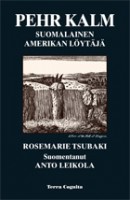 Pehr Kalm, suomalainen Amerikan löytäjä
Pehr Kalm, suomalainen Amerikan löytäjä
[Pehr Kalm, the Finnish discoverer of America]
Alkuteos [original work, in Italian]: Il Viaggio di Pehr Kalm in Nord-America 1747–1751. Dissertation, University of Genoa, 2002/2003
Suomennos [Translated by]: Anto Leikola
Helsinki: Terra Cognita, 2011. 199 p., ill.
ISBN 978-952-5697-49-0
€ 25, paperback
The Finnish naturalist and pastor Pehr (in Finnish, Pietari) Kalm (1716–79), a pupil of the famous Swedish botanist Carl von Linné, was professor of economics and rector of Turku Academy, the only university in Finland during its period under Swedish rule. Kalm gained his international reputation as a result of his account of a scientific expedition he made to north America in 1747–51, which was translated into several languages. The trip was the first scientific expedition to the New World, and Kalm paid close attention to nature as well as the economics, living conditions and culture of both colonists and native inhabitants. One of his aims was the gathering of plants for use in Sweden. Of the plants he brought back a species of hawthorn, creeper vine and purple-flowered raspberry are still cultivated in Finland. The German scholar Rosemarie Tsubaki’s doctoral thesis examines Kalm’s writings and complements it with material from other sources where Kalm’s notes have been lost. The Finnish translation is furnished with an introduction and expertly translated by Anto Leikola, Professor Emeritus of History of Science.
Translated by David McDuff
Utopia or cacotopia?
19 August 2011 | Extracts, Non-fiction
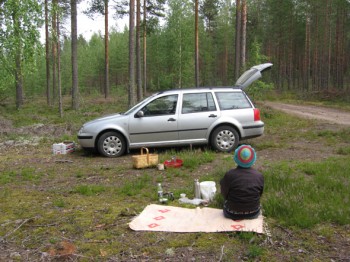
Viljakansaari, Finland, 2008. ©Merja Salo
Do we live in the age of autopia, and if we do, what does that mean? On this earth there are now perhaps 800 million cars, all vital to our modern lifestyles. Professor and photographer Merja Salo observes landscapes through her camera with this question in mind
Extracts and photographs from Carscapes. Automaisemia (Edition Patrick Frey & Musta Taide, 2011. Translation: Laura Mänki)
The car may be the vehicle for the everyman, but not every man is a good driver. According to Hungarian- born psychoanalyst Michael Balint, good drivers have the psychological structure of philobats. With their sense of sight, they perceive space well and control it by steering their vehicle skilfully. Ocnophiles, on the other hand, are more at home as passengers. They structure the world through intimacy and touch. When driving, they cling anxiously to the steering wheel and do not perceive the continously changing situations in traffic.
Kari-Paavo Kokki: Tuolit, sohvat ja jakkarat. Renessanssista 1920-luvulle [Chairs, sofas and stools. From the renaissance to the 1920s]
24 November 2011 | Mini reviews, Reviews
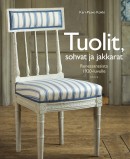 Tuolit, sohvat ja jakkarat. Renessanssista 1920-luvulle
Tuolit, sohvat ja jakkarat. Renessanssista 1920-luvulle
[Chairs, sofas and stools. From the renaissance to the 1920s]
Photographs: Katja Hagelstam
Helsinki: Otava, 2011. 175 p., ill.
ISBN 978-951-1-23415-9
€56, hardback
Could it be that chairs are the most important pieces of furniture in our daily lives? The history of furniture in Finland – not much has survived from earlier than late 16th century – is made up of Swedish, Russian and Finnish parts. Furniture-making in the Kingdom of Sweden, of which Finland formed a part until 1809, was modelled on European trends, and that was also the case in St Petersburg – which is close to Finland – during the period when Finland became a Russian-governed Grand Duchy (1809–1917). Finnish peasant furniture has always been of high quality, despite often harsh circumstances. Finnish furniture-makers adapted both Swedish and Russian styles; for example, Empire (in England, Regency) and Biedermeier chairs were either of the Russian or the Swedish type. Gustavian furniture (c. 1775–1810), from the period of King Gustav III, was popular and abundant, and in the past decades the style has become extremely favoured by collectors. Detailed, beautiful photography in this book supports the concise, informative text. Kari-Paavo Kokki, director of Heinola City Museum, is an antiques specialist.
A soul on the train
In one of Heli Laaksonen’s poems the narrator buys a ticket for her soul and herself in a train’s pet carriage. Her capricious poetry features new potatoes, woodpeckers, weasels, and even a pig in fox’s clothing. Introduction by Mervi Kantokorpi
Poems from Peippo vei (‘The chaffinch took it’, Otava, 2011)
First early
From the potato patch there rose a human seedling, too.
Winston, I called it
as it was Winstons I’d sowed in this row
Whole,
beautiful,
unmarked by hoe or blight.
I put it in the basket with the others.
It sat there in the quiet pile, at the edge,
looked on while I slogged away,
gnawing a little bit out of the side of a potato.
What was it thinking?
What could it be that earlies think about?
The first summer sparrows are fresh out of the oven.
I so wish they’d only think about nice things.
I try to look happy
to give them a good start. More…
Suomalainen piru. Paholainen kansanperinteessä [The Finnish devil. The Evil One in Finnish folklore]
23 December 2011 | Mini reviews, Reviews
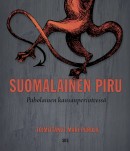 Suomalainen piru. Paholainen kansanperinteessä
Suomalainen piru. Paholainen kansanperinteessä
[The Finnish devil. The Evil One in Finnish folklore]
Toim. [Ed. by] Mari Purola
Kuvitus: [Illustrations]: Christer Nuutinen
Helsinki: Finnish Literature Society, 2011. 144 p., ill.
ISBN 978-952-222-289-3
€ 25, hardback
In Finnish folklore the Devil has borrowed features both from ancient popular belief and from the Christian faith. Unlike the devil of Christianity, the Finnish devil is not wholly evil, and the relation between man and devil may sometimes recall a contractual relationship: man can benefit from his link with the devil without losing his soul. In the mythological stories the devil is a a creature that supports the values of village society, who punishes misdemeanours and with whose help inexplicable phenomena like surprisingly good luck or illness can be explained. Finnish folk belief contains a numerous group of lesser magical figures such as elves and sprites. The devil has also borrowed the powers of the ancient gods, such as good luck in hunting from Tapio, and in fishing from Ahti. The folk archives of the Finnish Literature Society contain a collection of devil-themed stories from the 1880s to the 1960s.
Translated by David McDuff
Heikki Hiilamo: Uusi hyvinvointivaltio [The new welfare state]
1 June 2011 | Mini reviews, Reviews
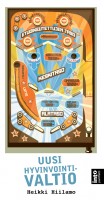 Uusi hyvinvointivaltio
Uusi hyvinvointivaltio
[The new welfare state]
Helsinki: Like Publishing, 2011. 131 p.
ISBN 978-952-01-0615-7
€ 17, paperback
There is concern in Finland about the decline of the Nordic welfare state and the return of a class society. Problems exist with regard to issues such as the country’s aging population, changes in the structure of the labour market, the increase in income disparity, and lifestyle issues. The impoverishment caused by the recession of the 1990s did not decrease in the early 2000s, as could be seen in things like the rise of bread lines, much debated by Finns. The author – an expert on the welfare state and a poverty researcher – examines the values of the good society and its institutions. He discusses welfare as the politics of social possibilities: ‘The current system does not sufficiently allow the individual to come up with his own initiatives for positive change – instead, it fetters those initiatives.’ Hiilamo’s campaining book reflects on how the welfare state could be developed twenty years after the recession crisis, and how the middle class might be brought to realise that the growth in income disparity also affects their own welfare.
Translated by David McDuff
Far from the madding crowd
21 February 2013 | Articles, Non-fiction
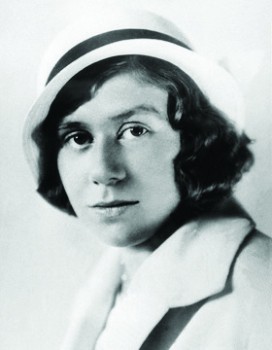
Saima Harmaja (1913–1937). Photo: WSOY
‘I don’t belong to the crowd,’ the young Saima Harmaja wrote in her diary in 1933. Her work as a poet was for her a vocation that superseded everything else. In her diaries she often speaks as a sociable young woman, with a delicious sense of humour, but her best poems seriously explore love, and death which cast its shadow over her. A selection of her poems – the best of which have made her a Finnish classic – is now published in English for the first time
In her diary the young poet claimed: ‘I think I would die if I could not write.’ What Harmaja shared with the poets of the early part of the twentieth century who influenced her was the private and personally experienced nature of poetry itself, rather than the realisation of any current aesthetic programme.
Harmaja is one of those poets whose works have passed through the hands of readers from decade to decade. She is also a prototype of the poet of her generation: gifts that led to the expectation of a brilliant career, a life that was brought to a tragic end by tuberculosis, leaving just five years of work as a poet. More…
Ulla Jokisalo & Anna Kortelainen
Pins and needles
11 May 2011 | Essays, Non-fiction
In these pictures by Ulla Jokisalo and texts by Anna Kortelainen, truths and mysteries concerning play are entwined with pictures painted with threads and needles. Jokisalo’s exhibition, ‘Leikin varjo / Guises of play’, runs at the Museum of Photography, Helsinki, from 17 August to 25 September.
Words and images from the book Leikin varjo / Guises of play (Aboa Vetus & Ars Nova and Musta Taide, 2011)
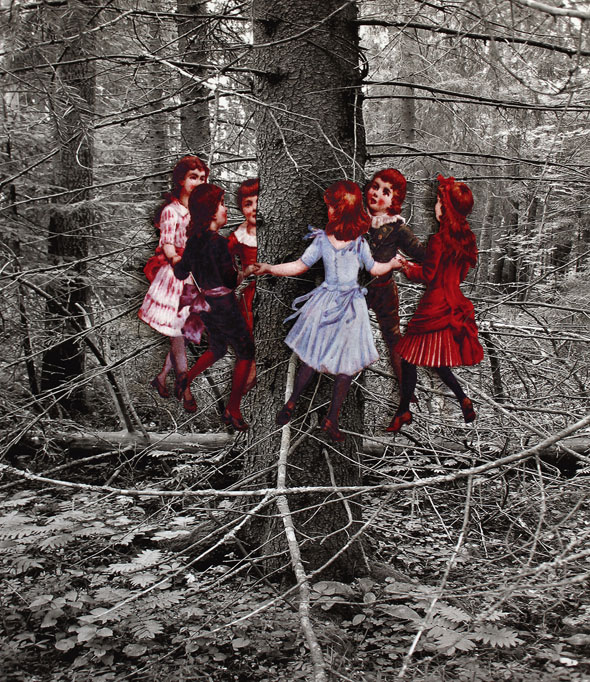
‘Ring dance’ by Ulla Jokisalo (pigment print and pins, 2009)

